The famous statue Jeanneke Pis is the female counterpart to the famous Manneken Pis statue in Brussels. Jeanneke Pis is a beloved icon and a symbol of the city’s unique culture. Just like her male counterpart, she captures the playful spirit and cheeky charm that has made the statues so popular. With her two pigtails and mischievous expression, Jeanneke Pis stands as a testament to Brussels’ sense of humor and its celebration of quirky traditions.
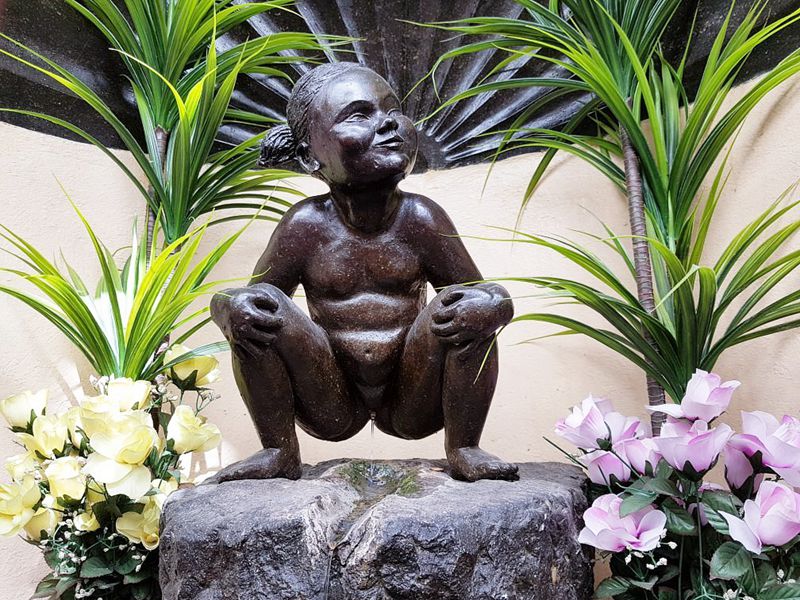
What is the female version of Manneken Pis?
Jeanneke Pis is the female version of Manneken Pis, the most famous statue in Brussels. The brazen little girl with two ponytails is less famous than her brother but much more modern. The little girl, made of bronze, crouches and smiles as she urinates on a gray limestone plinth.
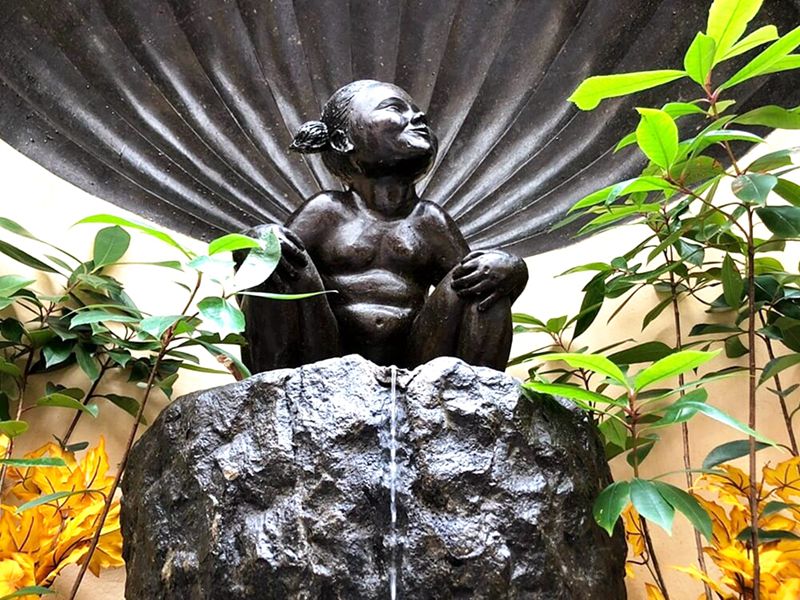
What’s the story behind Manneken Pis?
In fact, there is more than one legend about Manneken Pis. He was once called “Little Julian”. The most famous legend states that the statuette depicts a young boy who saved Brussels from catastrophe. The enemy has guarded the city gate, ready to blow up the city wall with gunpowder.
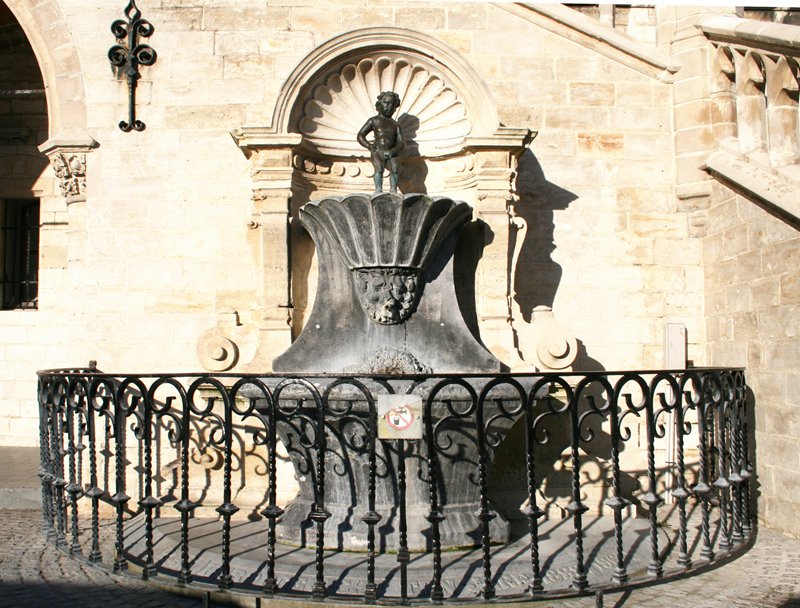
What is the most famous statue in Belgium?
The Manneken Pis statue in Brussels is the most famous Brussels statue in the city and one of the most visited attractions in the city. The statue, which depicts a young boy urinating in the fountain, has stood here since about 1618 and is popular with locals and tourists alike.
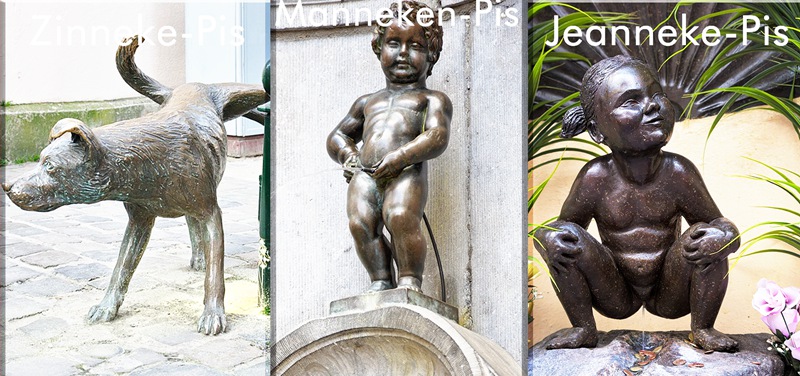
What is the Pissing Boy statue in Brussels?
Designed in 1388, the Manneken Pis is one of Brussels’ most iconic and beloved symbols, originally a means of fetching water for many Brusselsers. This is a small bronze statue, 50 centimeters, representing a young naked boy urinating in the fountain’s pool.
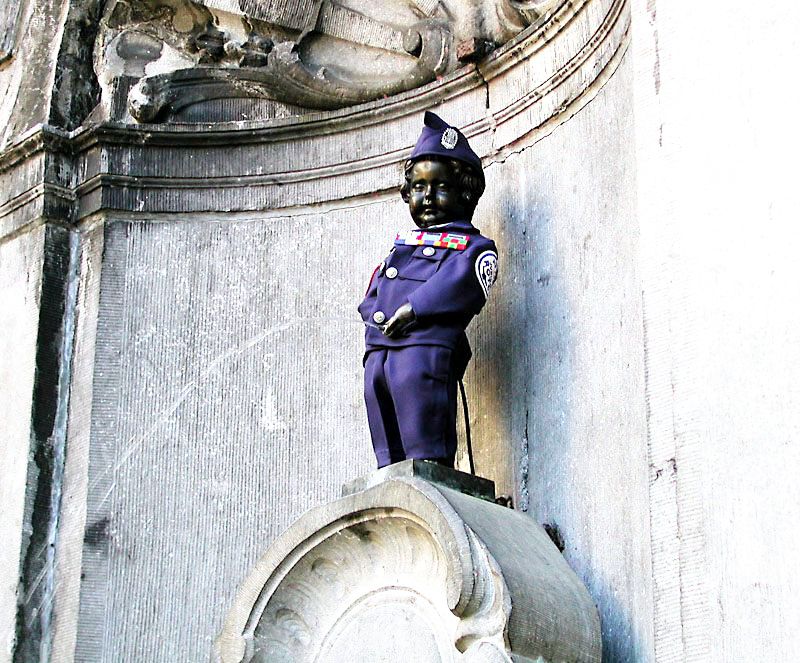
Why is Manneken Pis so popular?
Originally a fountain, the Manneken Pis has played an important role in the distribution of drinking water since the 15th century. The system is well-known throughout Europe. By the end of the 17th century, statues became increasingly important in city life.
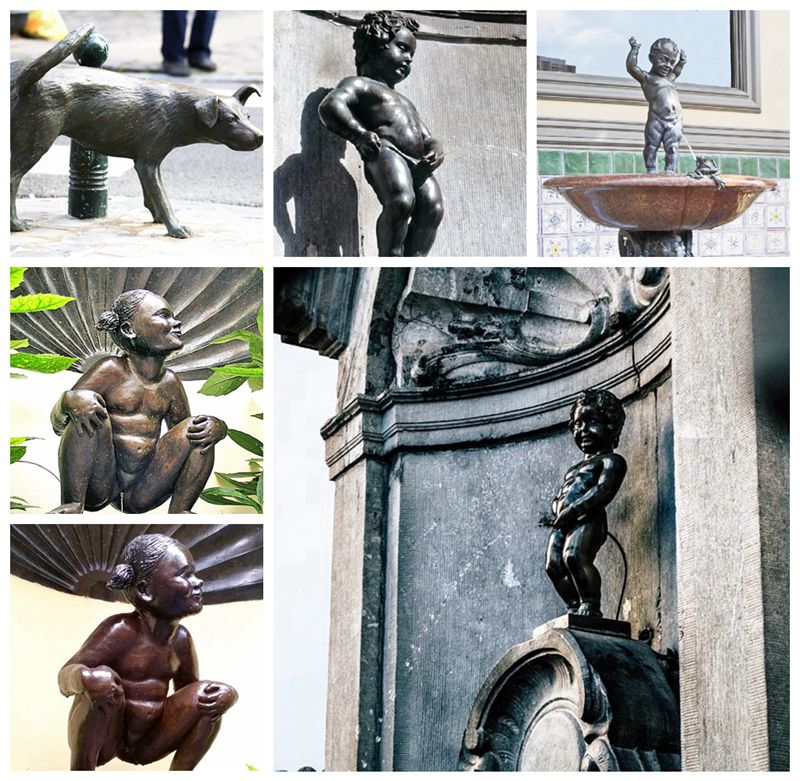
What is the story of the Belgian pee boy?
Legend has it that Brussels was surrounded by enemies who pretended to retreat but were actually hiding gunpowder. A young boy named Julian saw the burning fuse and quickly urinated on it. Out of gratitude, the city erected a statue in his honor.
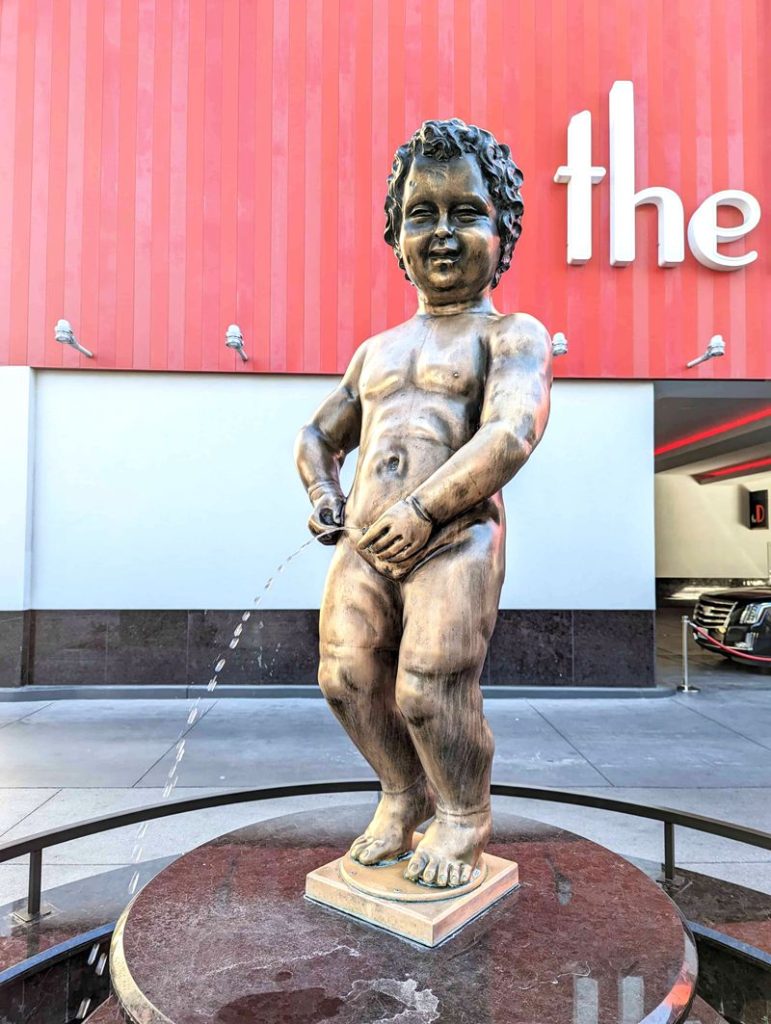
Jeanneke Pis History and Legend
Jeanneke Pis has a rich history and fascinating legends surrounding her. This iconic sculpture represents more than just a whimsical piece of art—it embodies the cultural significance and unique traditions of the city.
One aspect of Jeanneke Pis’s history is her connection to the city’s water distribution system. Just like the Manneken Pis, Jeanneke Pis was originally created as a water source, providing drinking water to the people of Brussels in the past. The statues served a practical purpose in ensuring the availability of clean water, a vital resource for the community.
Beyond its functional role, the Jeanneke Pis statue has inspired various folk tales and stories. One popular legend suggests that rubbing the statue’s head brings good luck and fertility. Many visitors and locals believe in this tradition and make a point of touching the statue to seek blessings or to enhance their chances of conceiving a child.
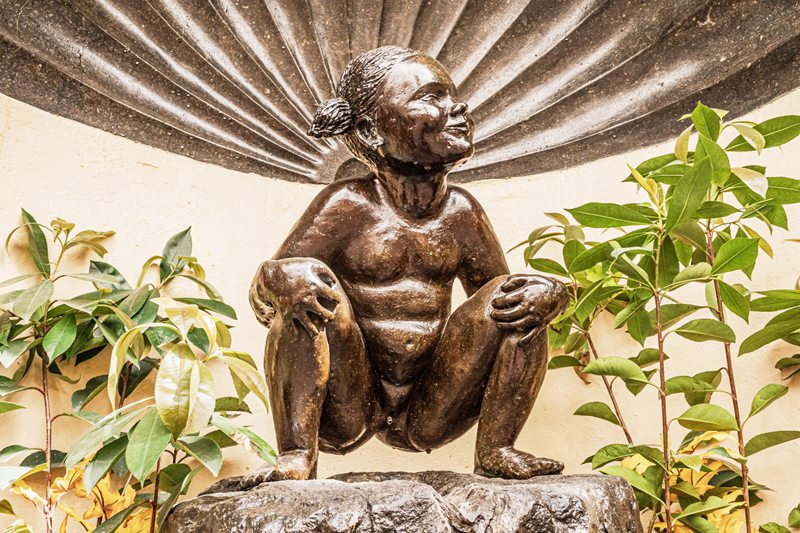
The cultural significance of the Jeanneke Pis statue could not be understated. It represents Brussels’ sense of humor, freedom of expression, and celebration of individuality. The statue’s mischievous expression, depicted with a cheeky smile, reflects the city’s playful spirit and its ability to find joy in the simple and unconventional.
Over time, Jeanneke Pis has become an iconic symbol of Brussels. The statue has attracted tourists from around the world, drawing attention to the city’s unique character and cultural heritage. It has become a must-visit attraction, where visitors could capture memorable photos and engage in the lively atmosphere of Brussels’ vibrant streets.
In conclusion, Jeanneke Pis holds a special place in Brussels’ history and identity. As the female counterpart to the renowned Manneken Pis, she embodies the city’s cultural heritage, represents its humor and individuality, and serves as a reminder of the significance of art in shaping a community’s identity. Visiting Jeanneke Pis is not just an encounter with a quirky statue; it’s an opportunity to immerse oneself in the charm and character of Brussels.
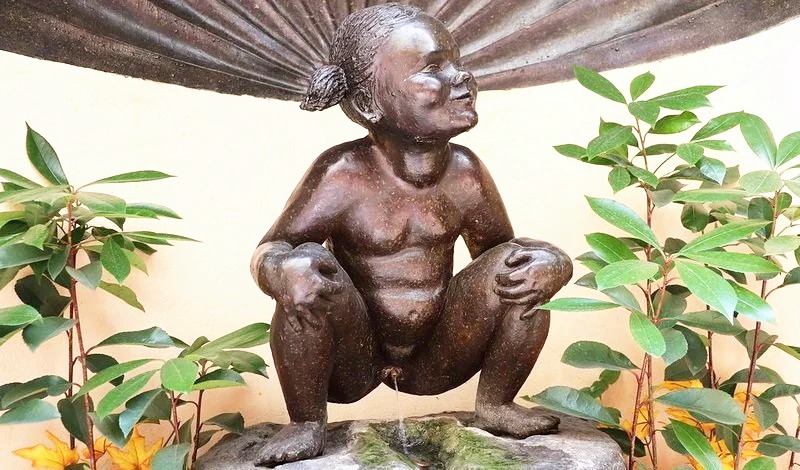
Symbolism and Meaning
The symbolism behind the little girl, Jeanneke Pis, and its significance in Belgian culture is multifaceted. The statue represents notions of freedom, irreverence, and a celebration of everyday life. It has become an endearing and cherished figure that captures the spirit of the city and its people.
Jeanneke Pis embodies the concept of freedom, both in a literal and metaphorical sense. The statue’s carefree pose and cheeky expression reflect a sense of liberation, encouraging individuals to embrace their true selves and embrace the joy found in simple pleasures. It symbolizes a rebellion against societal norms and a reminder to live life authentically and unapologetically.
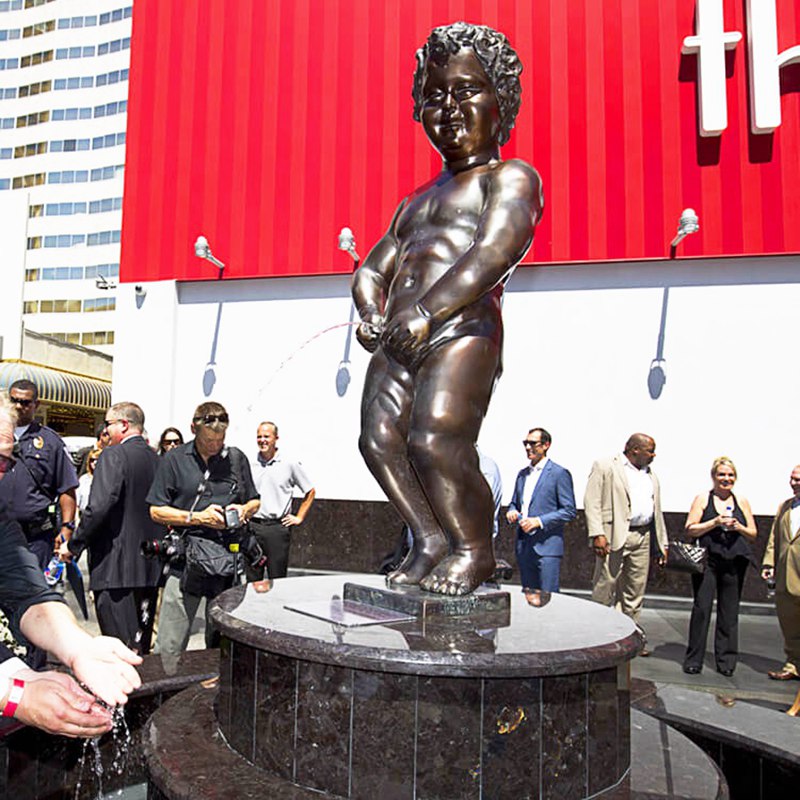
Moreover, Jeanneke Pis represents a sense of irreverence, challenging traditional ideas of what is considered appropriate or conventional. The statue’s playful and mischievous nature serves as a nod to the city’s irreverent spirit, encouraging people to find humor in the unconventional and embrace their quirks. It stands as a reminder that life shouldn’t be taken too seriously and that laughter and whimsy have their own place in culture.
In summary, Jeanneke Pis holds deep symbolic significance in Belgian culture. It represents freedom, irreverence, and a celebration of the everyday. The statue’s endearing nature has made it a beloved and cherished figure, encapsulating the spirit of Brussels and its people. Through its playful and unconventional representation, Jeanneke Pis has become an emblem of the city’s vibrant character and a beloved icon that captures the hearts of both locals and visitors alike.
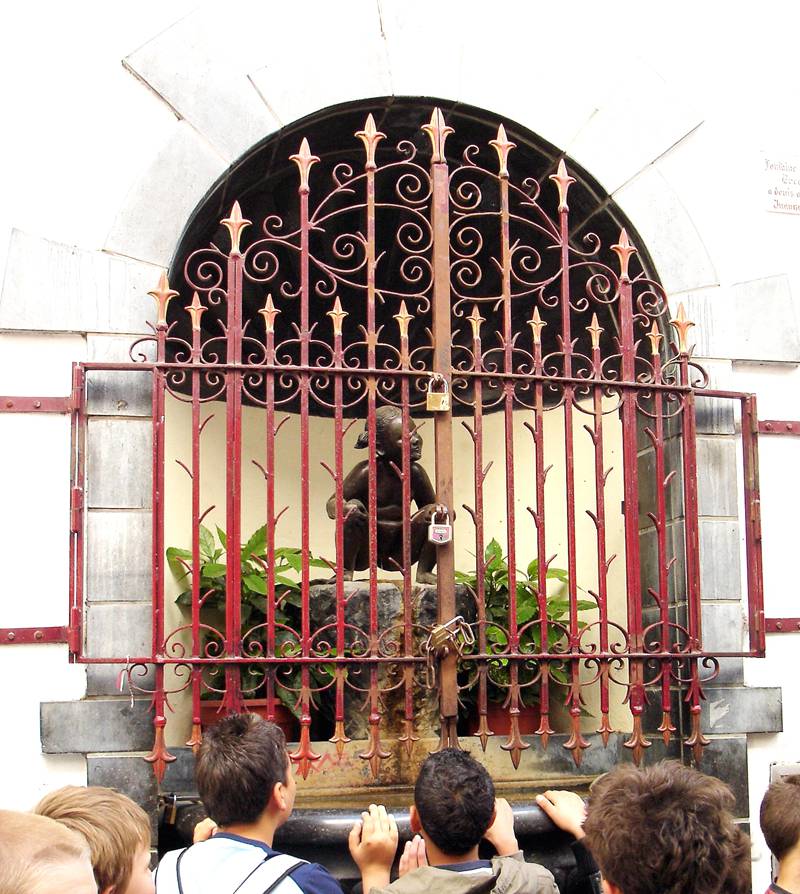
Artistic and Architectural Features
Jeanneke Pis, the little girl statue, exhibits distinctive artistic and architectural features that contribute to its overall aesthetic appeal. The statue’s materials, craftsmanship, and unique design elements add to its charm and integration within the surrounding environment.
The statue of Jeanneke Pis is typically made of bronze, a durable and versatile material commonly used in sculptures. Bronze allows for intricate detailing and provides a timeless aesthetic that enhances the statue’s visual impact. The craftsmanship involved in creating the statue involves the traditional lost-wax casting technique, where a wax model is coated in sand, melted out, and replaced with molten bronze. This meticulous process ensures the quality and durability of the sculpture.
Design-wise, Jeanneke Pis showcases specific elements that distinguish it from other sculptures. The statue often features the depiction of a young girl with two pigtails, wearing a mischievous expression. These details contribute to the statue’s playful and lively character, capturing the spirit of youth and joy.
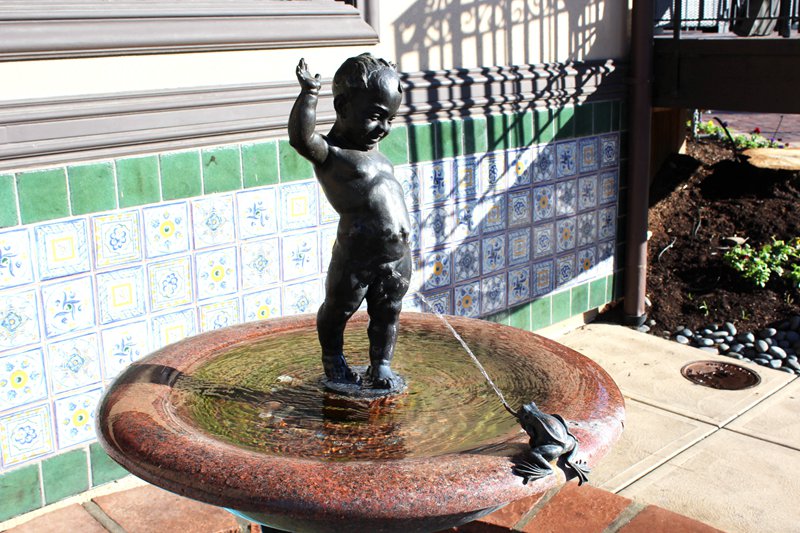
In terms of its integration within the surroundings, Jeanneke Pis is strategically placed in public spaces, often near walls or corners to create an element of surprise and discovery. The statue’s small size allows it to blend seamlessly with its environment, becoming a delightful surprise for passersby. Its placement in urban settings contributes to the overall aesthetic appeal of the area, adding a touch of whimsy and character to the cityscape.
In conclusion, Jeanneke Pis’s artistic and architectural features, including the use of bronze, intricate craftsmanship, and playful design elements, make it a unique and visually appealing sculpture. Its integration within the environment and contribution to the overall aesthetic of the area enhance its cultural significance and make it an iconic symbol of art, creativity, and the vibrant spirit of the city.
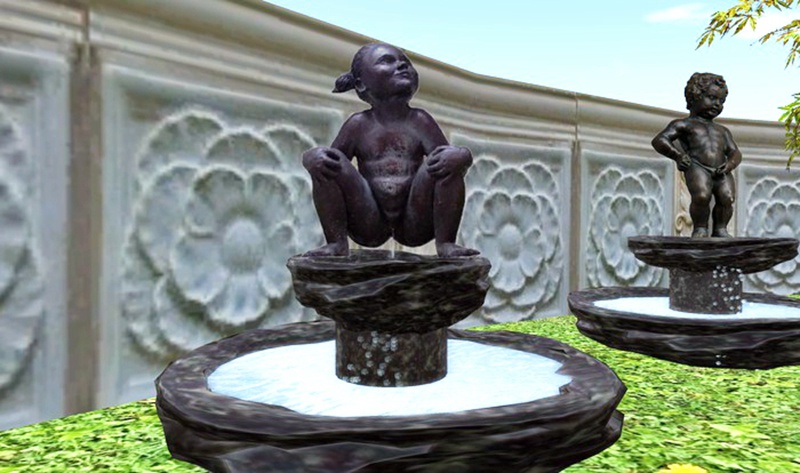
Cultural Significouldt Impact
Jeanneke Pis has had a significant impact on tourism and local culture, establishing itself as a popular attraction that draws visitors from around the world. The statue’s charm and unique character have made it a must-see destination for tourists visiting Brussels.
As a beloved symbol of the city, Jeanneke Pis attracts tourists who are intrigued by its playful and whimsical nature. Visitors are fascinated by the statue’s distinctiveness as the female counterpart to the famous Manneken Pis, and they appreciate the cultural significance it holds within Brussels.
The presence of Jeanneke Pis has also led to the development of activities and celebrations related to the statue. In Brussels, various events and festivals are organized to honor and celebrate Jeanneke Pis, emphasizing the statue’s role in the city’s cultural identity. These events bring locals and tourists together, fostering a sense of community and pride in their shared heritage.
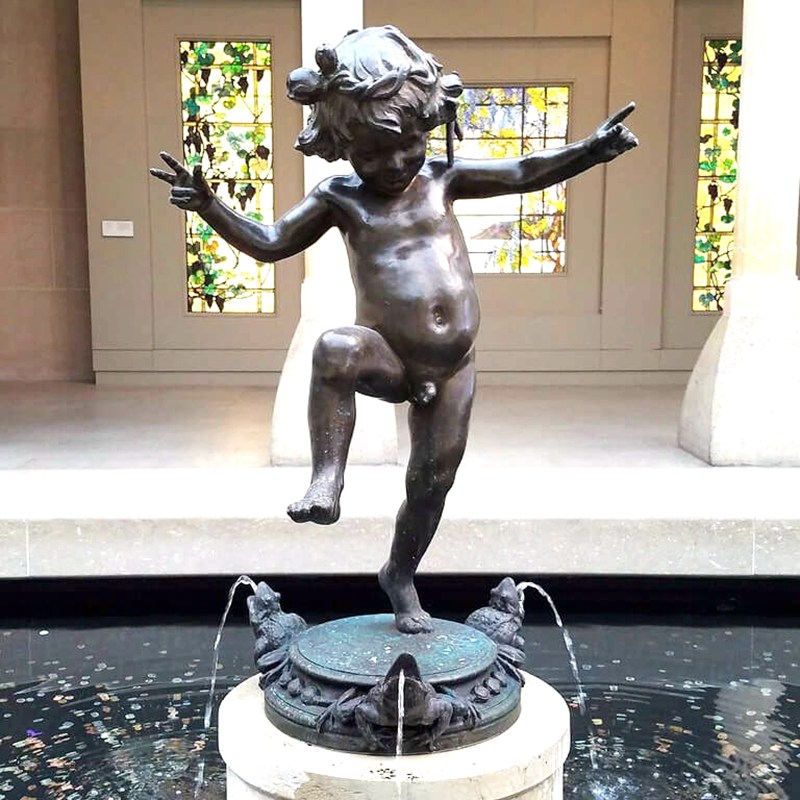
The popularity of Jeanneke Pis has also contributed to the overall tourism industry in Brussels. The statue has become a recognizable landmark and a symbol of the city’s vibrant and artistic atmosphere. It serves as a unique selling point for Brussels, attracting visitors who are interested in exploring the city’s rich cultural heritage and embracing its unconventional and humorous aspects.
Moreover, Jeanneke Pis has become an integral part of Brussels’ cultural landscape, solidifying its status as a cultural landmark. The statue embodies the city’s spirit of embracing diversity, freedom, and a celebration of everyday life. It represents the unique character of Brussels and its people, showcasing their open-mindedness and ability to find joy and humor in unexpected places.
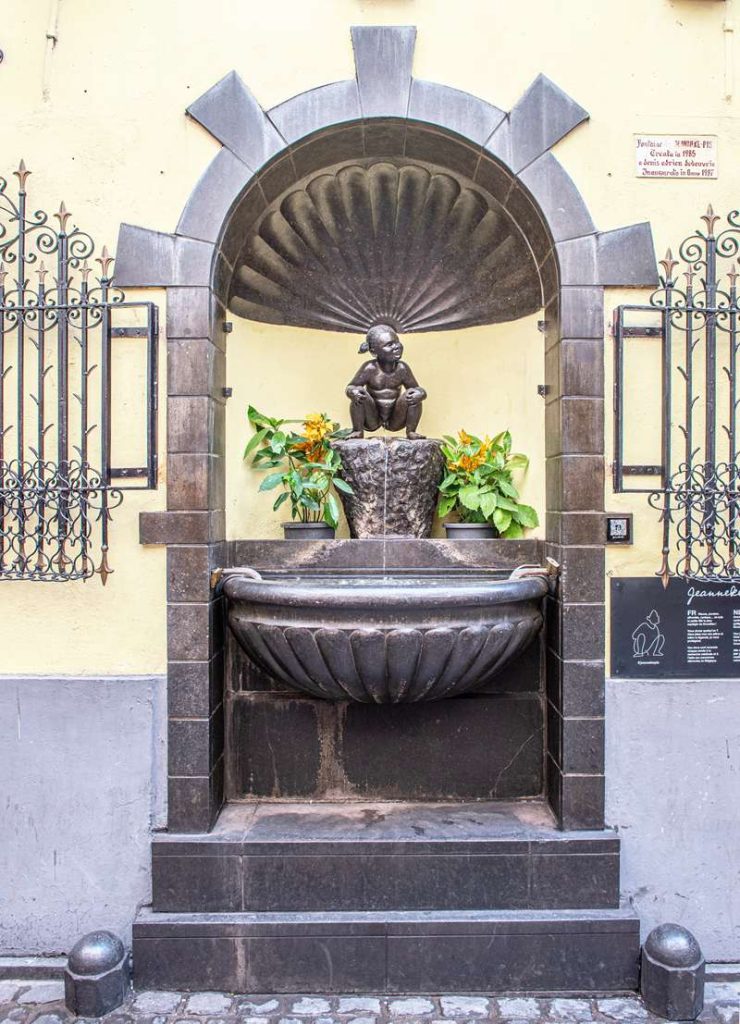
Tips and Suggestions to Visitors
For visitors planning to explore Jeanneke Pis, here are some tips and suggestions to enhance your experience.
Nearby Attractions: While visiting Jeanneke Pis, make sure to explore other attractions in the area. Grand Place, a UNESCO World Heritage Site, is just a short walk away and offers stunning architecture and a vibrant atmosphere. The famous Manneken Pis statue is also nearby, adding to the whimsical charm of the area.
Dining Options: After your visit, indulge in Brussels’s culinary delights. Head to Rue des Bouchers, known for its cozy restaurants serving traditional Belgian cuisine such as moules-frites (mussels and fries). Don’t miss out on trying some authentic Belgian chocolates and waffles.
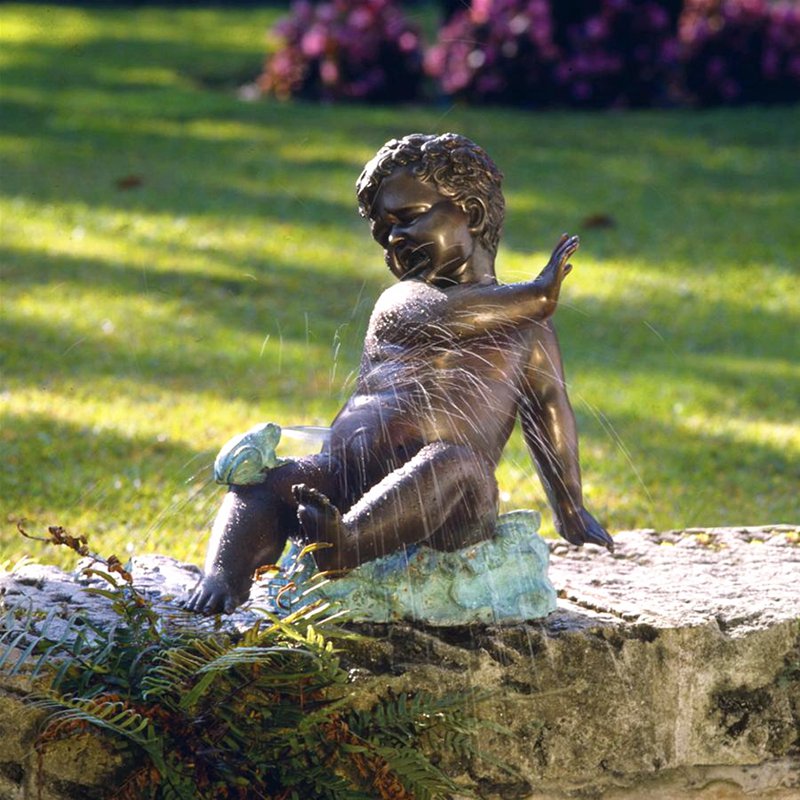
Practical Information: Jeanneke Pis is open to the public all year round and is accessible free of charge. It is advisable to check the opening hours in advance, as they may vary. The statue is conveniently located in the heart of the city, making it easily accessible by public transportation. The nearest metro station is Bourse, and several bus lines also pass through the area.
Interesting Anecdotes: Did you know that Jeanneke Pis was originally created to provide a gender-balanced representation alongside the Manneken Pis? The statue has become a symbol of women’s empowerment and celebrates femininity in a playful manner. Many locals believe that touching the statue brings good luck, so don’t be surprised to see visitors reaching out to interact with it.
Exploring Jeanneke Pis is a unique experience that adds a touch of whimsy to your visit to Brussels. So, don’t forget to include it in your itinerary and immerse yourself in the city’s rich cultural heritage and playful spirit.
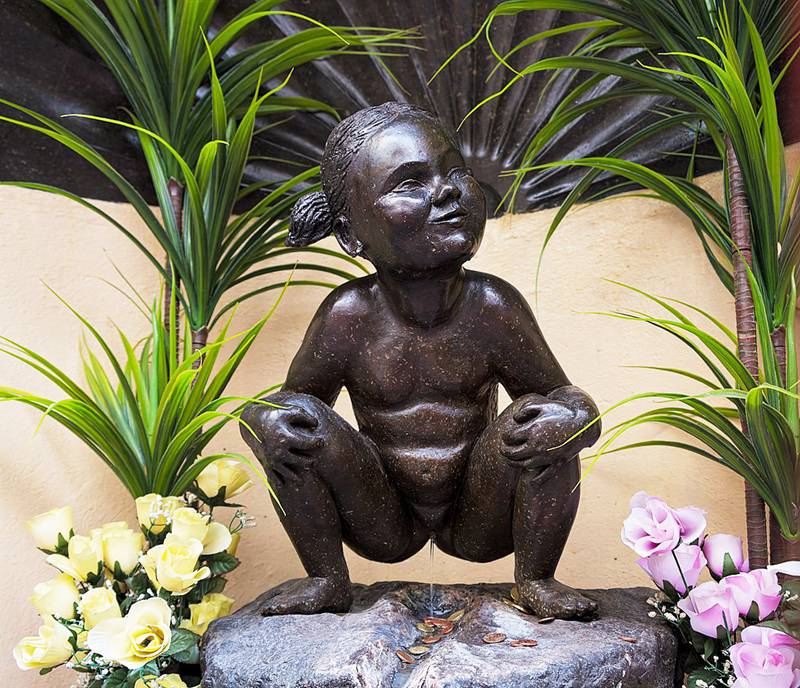
More Places Featuring Peeing Sculptures
In the United States, there are similar sculptures inspired by the concept of Manneken Pis. One example is the “Peeing Boy of Provincetown” located in Provincetown, Massachusetts. This famous Brussels sculpture depicts a boy urinating and is a popular tourist attraction in the area. And the artist David Cerny’s controversial sculpture, “Proudy,” features two bronze men who use their robotic movements to create text messages by manipulating streams of urine. Well, a peeing Boy of Iya Valley in Miyoshi, Japan. A statue erected on an infamous cliff where young boys would hold dangerous “pee offs” to prove their mettle.
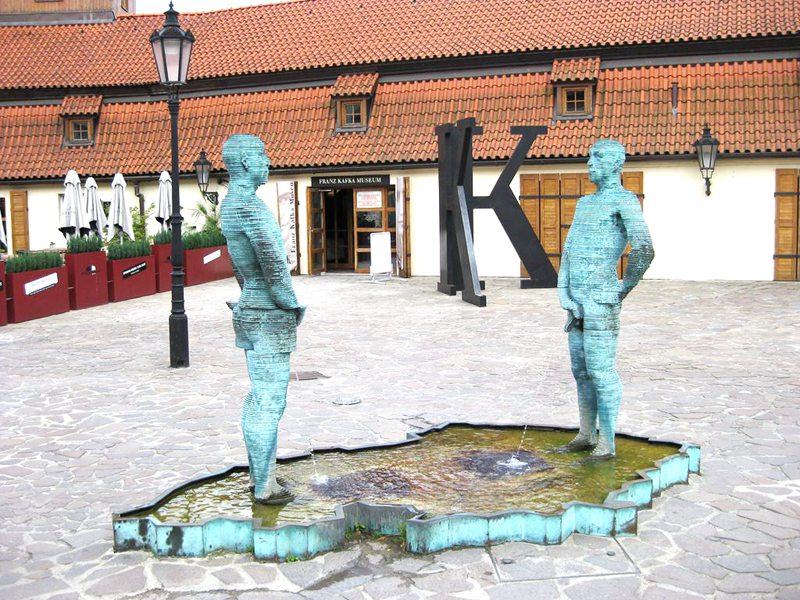
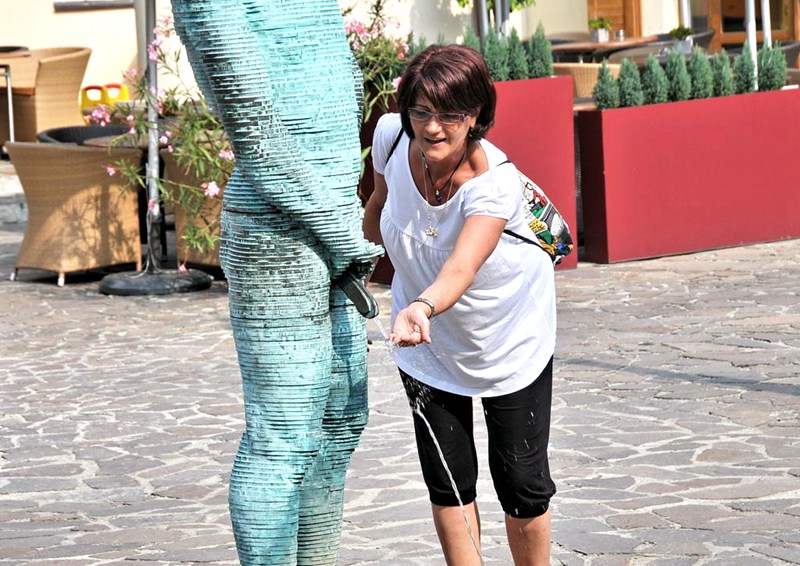
Conclusion
In summary, we discussed the significance of Jeanneke Pis as a symbol of heritage and cultural identity in Brussels. The statue represents the city’s unique character and its ability to find humor in unexpected places. Also, we highlighted Jeanneke Pis’ impact on tourism and local culture, emphasizing its role in shaping Brussels’ identity as an artistic and vibrant city. we want to encourage readers to visit the statue and experience its charm firsthand, inviting them to embrace Brussels’ heritage and appreciate the city’s unconventional and humorous aspects.
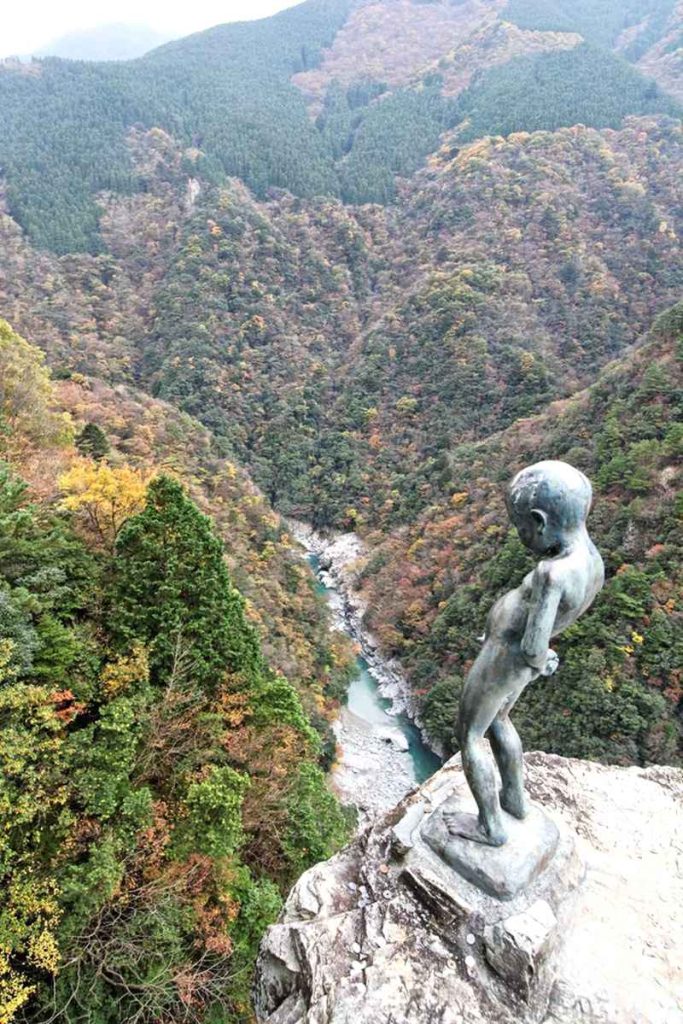
Get the High-Quality Bronze Peeing Statue
Of course, if you want to cast bronze Jeanneke Pis, please trust YouFine Art Sculpture strength, our artist could cast an exact replica for you. Of course, if you have custom needs and want to change the color of the sculpture and some facial details, our artists could also meet your needs. In addition, each of our bronze sculptures would be made with the same proportion of clay model, you could fully believe that our sculptures are 99% reductive. There is no doubt that we could cast all kinds of bronze peeing boy statues for you.